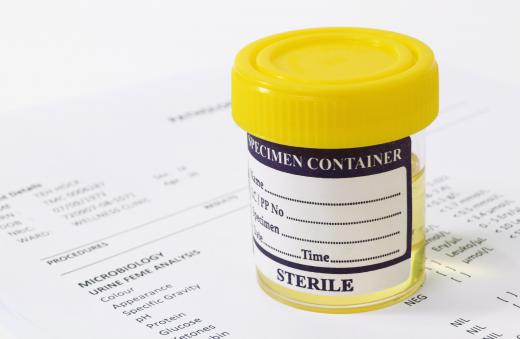How does Distilling Urine Produce Potable Water?
 Michael Pollick
Michael Pollick
There is a survival adage which states a person could live three weeks without food, but only three days without water. The search for potable (drinkable) water sources should always be a major priority for those who find themselves cut off from civilization. One of the ways potable water can be obtained in the wild is by distilling urine, although many people are understandably reluctant to pursue that method until it becomes a matter of true survival.
There are several different methods for distilling contaminated water into potable water, each with their own pluses and minuses. Conceivably, a source such as human urine could be converted into steam by boiling it in a covered metal container over a campfire. The steam would be free of most impurities because any solid minerals would remain in the bottom of the container and bacteria would be destroyed by the heat. A length of tubing would capture the steam and allow it to cool back into liquid form. In the case of urine, the distilled water vapor would have to be filtered and possibly distilled a second time. This method of distilling urine into potable water would be labor intensive, however, and the results may be less than satisfactory.

Another method for distilling urine into potable water, however, would not require the use of a campfire, distillation tank or lengths of tubing. A more passive source of potable water involves the condensation of water and solar heating. First, a large hole must be dug into the ground to expose as much moisture-laden soil as possible. A clean receptacle should be placed in the center of the hole. The next step may sound completely distasteful, but it is essential when distilling urine for survival. All future urine should be deposited in the freshly-excavated area around the receptacle, but not in it.

During evening hours, a large plastic sheet or tarp should be placed over the excavated site. The corners of the sheet can be secured with large rocks, The sheet itself should not touch the sides of the hole, but remain suspended several inches above it. The area of the sheet directly over the receptacle should be held down with a rock or can to form a focal point for condensation and distillation. Some water should condense overnight and be drawn into the receptacle.
During the heat of the day, solar rays should begin distilling urine from the ground and the water vapor will collect on the plastic sheet. Because the solid minerals and other contaminants usually found in urine are too heavy to evaporate, the trapped water vapor should eventually condense on the plastic sheet and drip into the receptacle as potable water. Distilling urine may not be a person's first choice for creating drinking water, but it can be done with minimal supplies if survival is truly at stake.
AS FEATURED ON:
AS FEATURED ON:












Discussion Comments
@g4project: My guess is that you don't understand what distillation is. Distillation doesn't change something into something else. It's a method of separating something from something else. in this case you are separating urea and salts from the water they are dissolved in which make urine. The campfire method would produce temperatures where some of the urea would vaporize and condense with the water in the collection receptacle. Whereas the solar method would be cooler and only water will vaporize and condense on the plastic, which then drips into the receptacle.
@g4project - The composition of urine is pretty much just water, with a few dissolved salts and other impurities. So, it can be almost completely transformed into drinkable water.
However, both of the methods described above (which are classic survival methods of distillation) will result in some of the water being lost. They both rely on the water in the urine being transformed into vapor to separate it from the impurities. Inevitably some of the water vapor will escape because in a survival situation you wouldn't have the equipment to catch it all. How much depends on the weather and other factors.
In lab conditions you could probably make close to 100% of the urine into water. I think they do that on the International Space Station for example.
In a survival situation you can also use these methods to distill salt or unclean water, which people might find less disgusting to think about than urine.
But, if nothing else is available, you should do what you can to survive.
I am wondering if you are distilling urine would 100% of the urine change into water or is some of the amount of urine lost and if so how much? Does it depend on what method you are using?
Post your comments